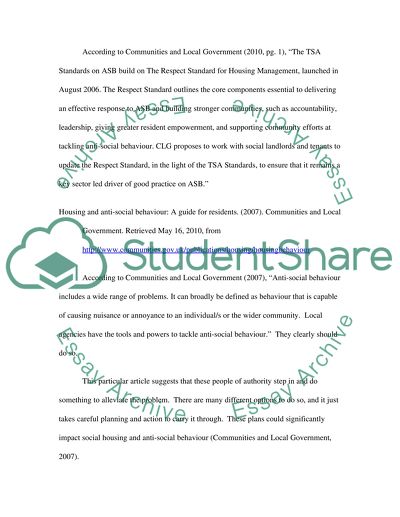Cite this document
(“Anti-Social Behavior in Social Housing Essay Example | Topics and Well Written Essays - 2000 words”, n.d.)
Anti-Social Behavior in Social Housing Essay Example | Topics and Well Written Essays - 2000 words. Retrieved from https://studentshare.org/miscellaneous/1530522-anti-social-behavior-in-social-housing
Anti-Social Behavior in Social Housing Essay Example | Topics and Well Written Essays - 2000 words. Retrieved from https://studentshare.org/miscellaneous/1530522-anti-social-behavior-in-social-housing
(Anti-Social Behavior in Social Housing Essay Example | Topics and Well Written Essays - 2000 Words)
Anti-Social Behavior in Social Housing Essay Example | Topics and Well Written Essays - 2000 Words. https://studentshare.org/miscellaneous/1530522-anti-social-behavior-in-social-housing.
Anti-Social Behavior in Social Housing Essay Example | Topics and Well Written Essays - 2000 Words. https://studentshare.org/miscellaneous/1530522-anti-social-behavior-in-social-housing.
“Anti-Social Behavior in Social Housing Essay Example | Topics and Well Written Essays - 2000 Words”, n.d. https://studentshare.org/miscellaneous/1530522-anti-social-behavior-in-social-housing.


